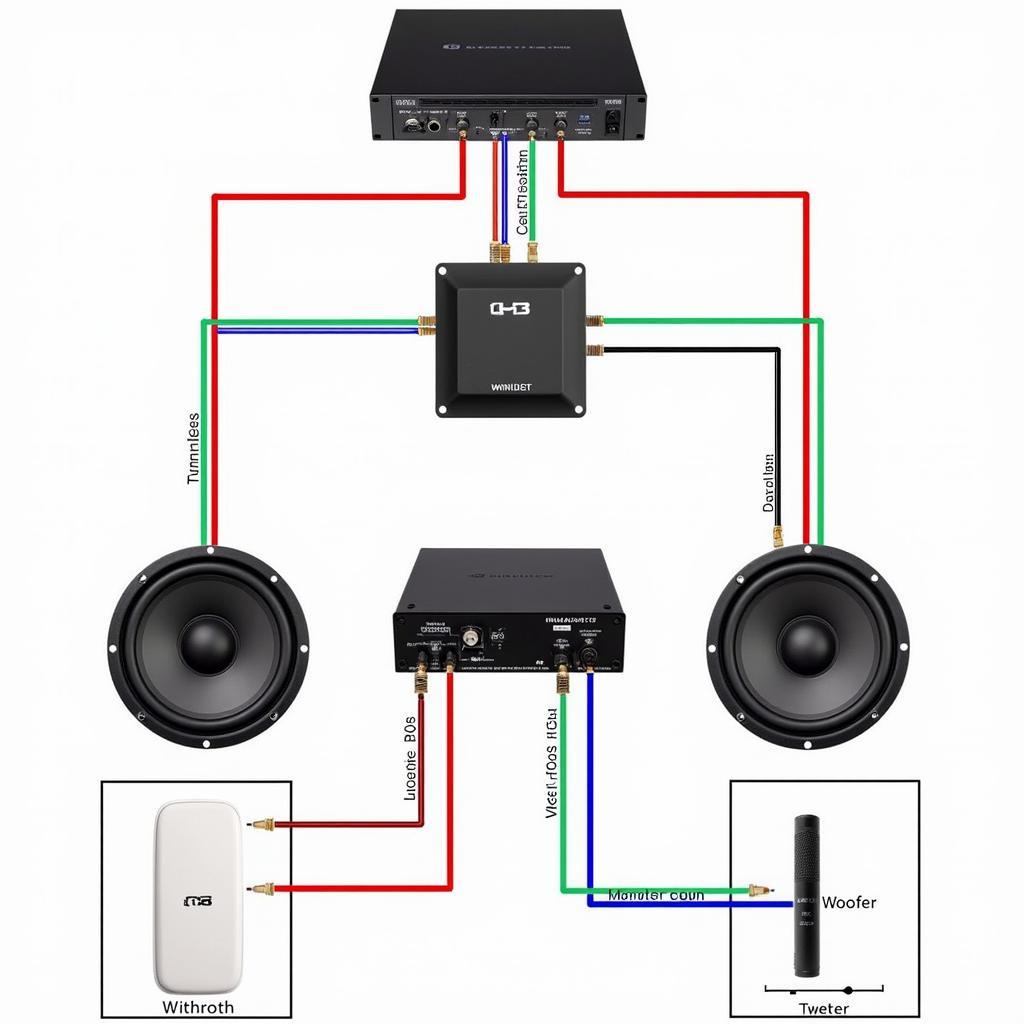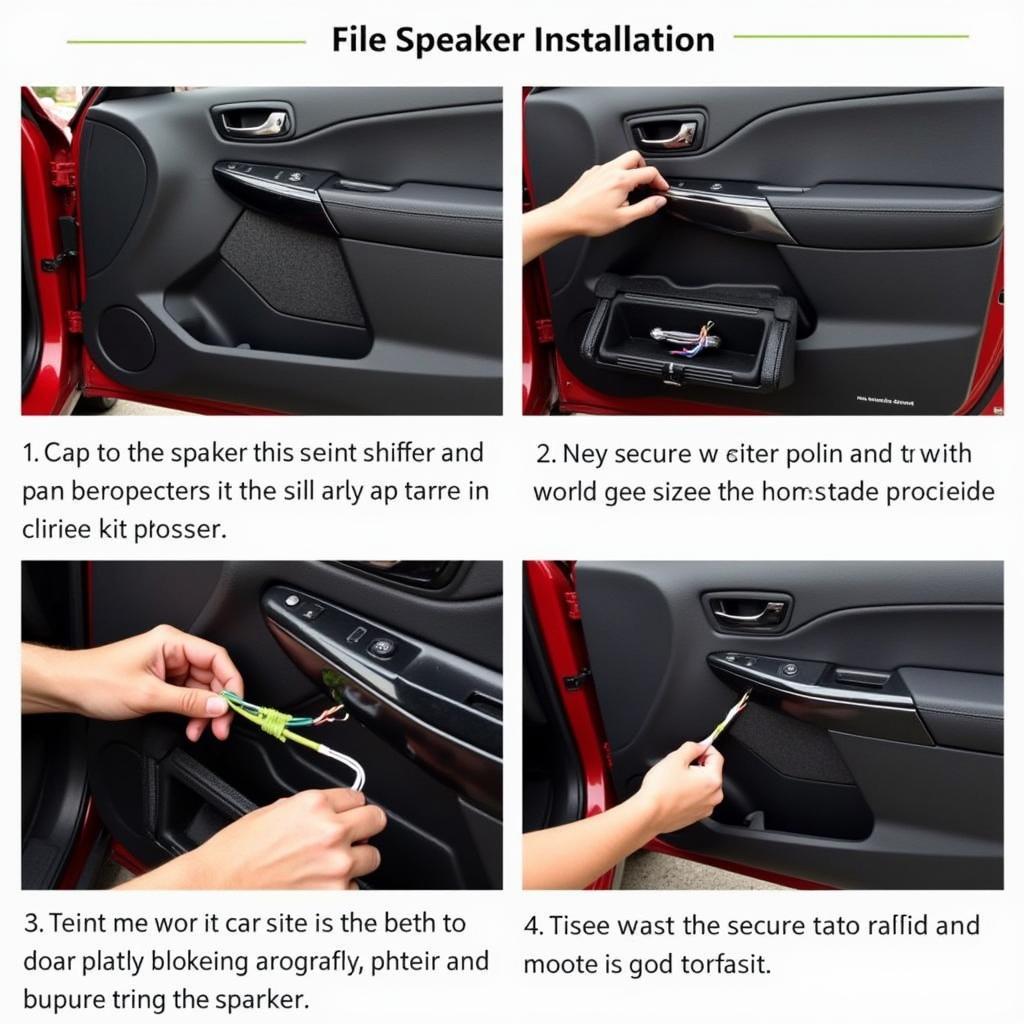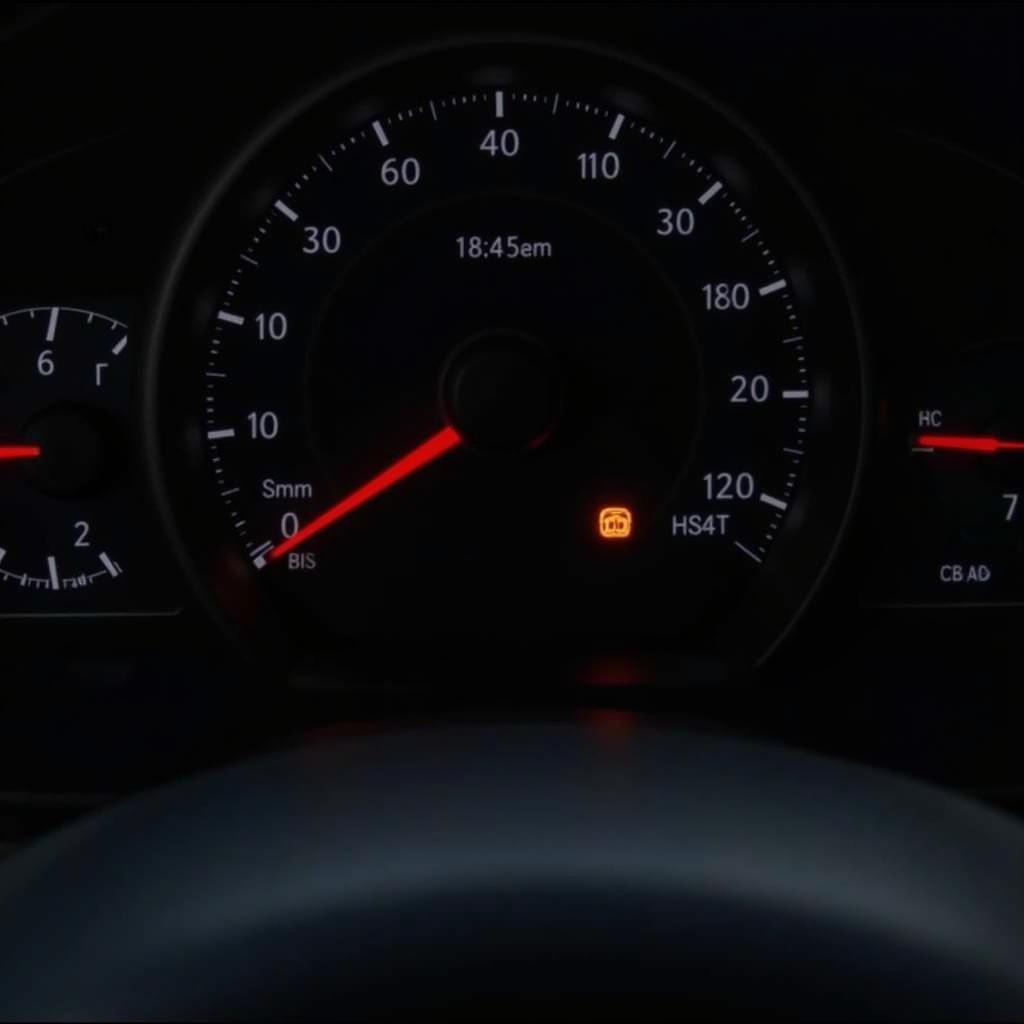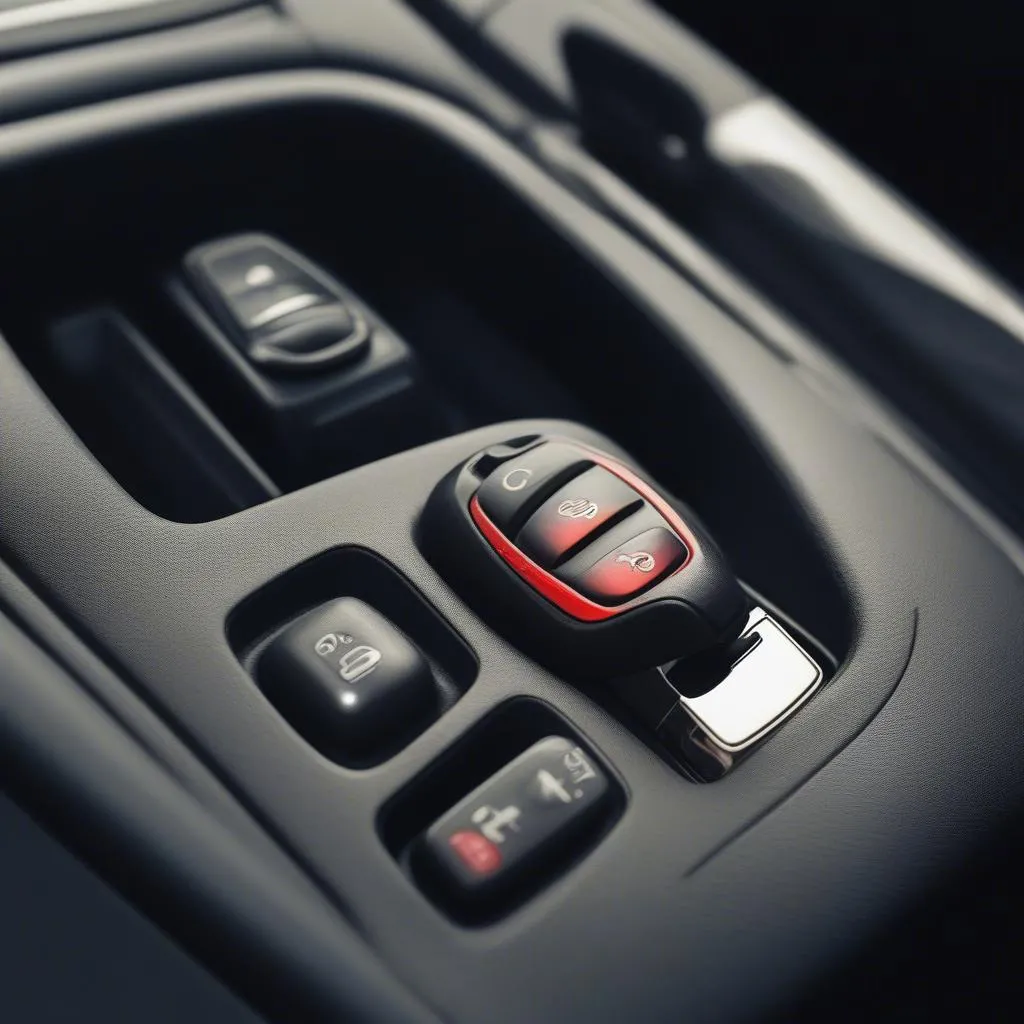Understanding a split speaker car radio wiring diagram is crucial for any car audio enthusiast looking to upgrade or troubleshoot their system. Whether you’re dealing with a faulty speaker, adding new components, or simply want to understand how your car audio system is wired, a wiring diagram can be your best friend. This guide will walk you through the intricacies of split speaker systems and their corresponding wiring diagrams, equipping you with the knowledge to tackle any car audio challenge.
What is a Split Speaker System?
A split speaker system utilizes separate components for different frequency ranges, resulting in improved sound quality and clarity. Unlike coaxial speakers, which house the woofer, tweeter, and sometimes a mid-range driver in a single unit, split speaker systems have these components mounted individually. This allows for optimal placement of each driver, leading to a more immersive and dynamic listening experience. The woofer, responsible for low frequencies, can be placed in the door, while the tweeter, which handles high frequencies, can be positioned higher up on the dashboard or door panel for better sound staging.
Split systems typically include a crossover, an electronic device that divides the audio signal into different frequency bands and directs them to the appropriate drivers. This ensures that each speaker receives the frequencies it’s designed to handle, preventing distortion and maximizing performance. Understanding the role of the crossover is essential when interpreting a split speaker car radio wiring diagram.
Decoding a Split Speaker Car Radio Wiring Diagram
A split speaker car radio wiring diagram is a visual representation of how the various components of your car audio system are connected. It shows the path of the audio signal from the head unit to the amplifier (if present), the crossover, and finally, the individual speakers. These diagrams use standardized symbols to represent different components and wire colors to indicate their function.
 Typical Split Speaker Wiring Diagram
Typical Split Speaker Wiring Diagram
How to Read a Wiring Diagram
Reading a wiring diagram might seem daunting at first, but it’s quite straightforward once you understand the basics. The diagram typically starts with the head unit, the source of the audio signal. From there, wires are shown branching out to the amplifier, if one is used. The amplifier then sends the signal to the crossover. The crossover filters the signal and sends the appropriate frequencies to the woofer and tweeter. Each wire is typically labeled with a color code, which corresponds to its function (e.g., positive, negative, speaker).
Common Wire Colors and their Functions
- Positive (+) Wire: Often red, but can be other colors. Carries the audio signal to the speaker.
- Negative (-) Wire: Typically black or brown. Completes the circuit and returns the signal to the ground.
- Speaker Wires: Various colors, often paired for each speaker. Connect the amplifier or head unit to the speakers.
Troubleshooting with a Wiring Diagram
A wiring diagram can be invaluable when troubleshooting car audio problems. If a speaker isn’t working, the diagram can help you trace the signal path and identify the faulty component or connection. For example, if the tweeter isn’t producing sound, you can check the wiring between the crossover and the tweeter to see if there’s a loose connection or a damaged wire.
“A clear understanding of your car’s wiring is essential for any DIY audio project,” says John Davis, a seasoned car audio technician with over 20 years of experience. “A wiring diagram is your roadmap to a successful installation.”
Installing a Split Speaker System
When installing a new split speaker system, the wiring diagram is your guide. It provides a step-by-step visual representation of how to connect all the components correctly. By following the diagram carefully, you can ensure that the system is wired properly and functions optimally.
“Don’t underestimate the importance of a good wiring diagram,” adds Maria Sanchez, another experienced car audio specialist. “It can save you hours of frustration and prevent costly mistakes.”
 Installing Split Speaker System in Car Door
Installing Split Speaker System in Car Door
Conclusion
A split speaker car radio wiring diagram is a crucial tool for anyone working with car audio systems. Understanding how to read and interpret these diagrams can empower you to diagnose problems, install new components, and ultimately, enjoy a superior audio experience in your car. By carefully following the wiring diagram and adhering to best practices, you can ensure a successful and rewarding car audio project. If you are looking to add Bluetooth to your car, you can check out bluetooth radios for car’s.
FAQ
- What are the benefits of a split speaker system? Split systems offer improved sound quality and clarity compared to coaxial speakers.
- Where can I find a wiring diagram for my car? Your car’s owner’s manual, online forums, or car audio websites are good resources.
- What do the different symbols on a wiring diagram represent? Each symbol represents a different component, such as the head unit, amplifier, or speaker.
- What should I do if a speaker isn’t working? Consult the wiring diagram to trace the signal path and identify the issue.
- How important is the crossover in a split speaker system? The crossover is essential for dividing the audio signal and directing it to the correct speakers.
- Can I install a split speaker system myself? Yes, with the help of a wiring diagram and basic tools.
- What are some common mistakes to avoid when installing car audio? Improper wiring, loose connections, and incorrect component matching are common pitfalls.


